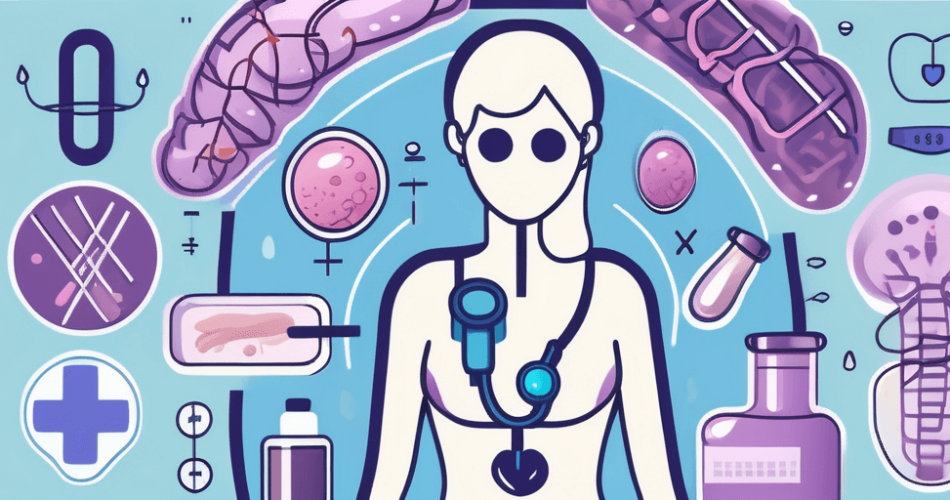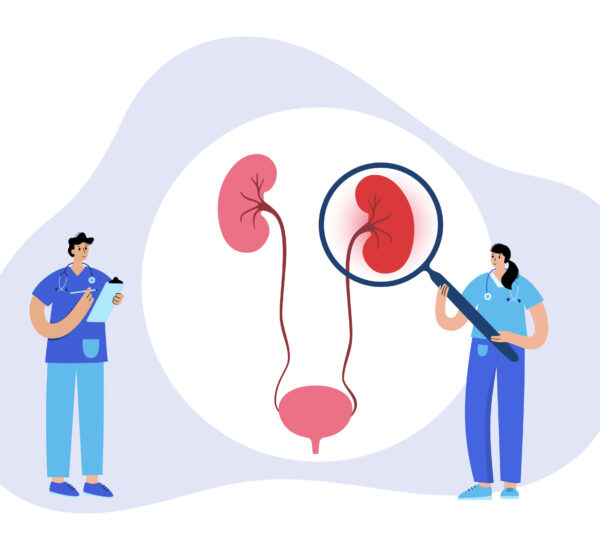Urinary tract infection is a common health issue that many women face. While both men and women can develop UTIs, they are more prevalent in women due to several factors. If you are one of those that suffers from this condition, it is a must to be well aware of the common uti symptoms women commonly experience.
Being able to know these key information can help you to address the condition better and seek immediate help. In this blog, we’ll be discussing this topic, which patients can rely on for self-awareness and monitoring of conditions. Let’s begin!
Understanding Urinary Tract Infection (UTI)

A UTI is an infection that occurs in any part of the urinary system, which includes the urethra, bladder, ureters, and kidneys. Most UTIs are caused by bacteria, specifically the Escherichia coli (E. coli) a type of bacteria, which is commonly found in the gastrointestinal tract. While men can also get UTIs, they are more prevalent in women due to anatomical and hormonal differences.
Usually, UTI occurs when bacteria enter the urinary tract and multiply, leading to an infection. The most common type of UTI is a bladder infection, also known as cystitis. If left untreated, the infection can progress to the kidneys, causing a more severe condition known as a kidney infection or pyelonephritis.
It’s essential to seek medical attention if you suspect you have a UTI, as untreated infections can lead to serious complications. Your healthcare provider may prescribe antibiotics to clear the infection and prevent it from spreading further.
Why UTIs are More Common in Women
Several factors contribute to the higher incidence of UTI in women compared to men. Firstly, women have a shorter urethra, which allows bacteria to reach the bladder more easily. Additionally, the urethral opening in women is closer to the anus, making it easier for bacteria to spread from the gastrointestinal tract. Lastly, hormonal changes during menstruation, pregnancy, and menopause can affect the urinary tract’s natural defenses, making it more susceptible to infection.
Furthermore, the use of certain contraceptive methods, such as spermicides and diaphragms, can alter the vaginal flora and pH balance, increasing the risk of UTIs in women. Understanding these risk factors can empower individuals to make informed choices about their sexual health and reduce the likelihood of developing a urinary tract infection.
Common Causes of UTI

As mentioned, one of the primary UTI causes is bacteria. In most cases, the bacteria that travels from the rectum or vagina into the urethra is the reason why women usually have this condition. This can happen during sexual intercourse, improper wiping after using the bathroom, or the use of certain feminine hygiene products.
While those situations are the common reasons why uti symptoms in women occur, there are still other factors that can lead to its occurrence. For instance, hormonal changes as a cause of UTI during menopause can increase the risk of UTIs in women. In the case of menopause, women are more prone to the infection due to lack of estrogen. Thus, making it easier for the bacteria to travel and infest. Meanwhile, for pregnant women, it is the case of enlargement of the uterus during pregnancy, which blocks the pee or urine from draining properly, resulting in bladder infection. With that, it can increase the probability of UTI in pregnancy.
Moreover, older adults who need the assistance of a catheter to urinate might also be prone to UTI. It is most likely to happen due to the prolonged use of such medical instruments. That’s why it’s best to seek experts to know the suitable time for using them. Doing so helps to prevent CAUTI or catheter associated urinary tract infection.
These known UTI causes are crucial information when it comes to combating urinary infections. Understanding these causes can help patients to take good care of their genitals through proper hygiene. Thus, promoting a healthy urinary tract and overall well being.
Risk Factors for UTIs in Women

Aside from the common causes, there are also several risk factors that can increase the likelihood of UTIs in women. While they can be uncomfortable and sometimes painful, knowing the risk factors associated with the infection can help individuals take preventive measures to reduce their chances of developing an infection.
Here are the possible factors the can influence the probability of females to contract UTI:
Age-Related Risk Factors
Women of all ages can develop UTIs, but certain age-related factors contribute to their prevalence. For instance, sexually active young women are more susceptible to have this condition due to frequent sexual activity. That’s why usage of contraception tools such as condoms are important.
Furthermore, as mentioned, pregnancy and menopausal stage are also known to contribute to the probability of women contracting the disease. With their susceptibility to UTI, it is important to be proactive and maintain good urinary tract health. Doing so can help reduce the likelihood of developing an infection.
Lifestyle-Related Risk Factors
Moreover, several lifestyle factors can increase the risk of UTIs. Poor hygiene practices, such as not wiping properly after using the bathroom or using irritating feminine hygiene products, can introduce bacteria into the urethra. In short, engaging in healthy lifestyle habits, such as maintaining good personal hygiene practices can play a significant role in reducing the risk of UTI. Thus, ensuring a healthier urinary tract and body.
Gender Differences in UTI Symptoms
It is important to note that while women are more prone to UTIs, men can also develop urinary tract infections, especially as they age. A known factor such as an enlarged prostate can increase their UTI risk. This condition also blocks the bladder, resulting in the entrapment of urine. Thus, making it a higher risk of UTI for men.
While the symptoms of UTI are generally similar for both men and women, there are some gender-specific indicators that only women may experience. Understanding these differences can help women identify UTIs and seek prompt medical attention.
Recognizing UTI Symptoms in Women
Being able to identify the symptoms of a UTI is crucial for seeking timely medical attention. The urinary tract includes the kidneys, ureters, bladder, and urethra. When bacteria enter the urinary tract and multiply, they can cause an infection. Women are more prone to UTIs than men due to their shorter urethras, which make it easier for bacteria to reach the bladder.
Here are some of the common UTI symptoms women have:
- Frequent urge to urinate
- Burning sensation during urination
- Cloudy or strong-smelling urine
- Lower abdominal pain
- Pelvic pressure or discomfort
- Feeling of incomplete bladder emptying.
Other UTI Symptoms Women May Experience
In addition to the common symptoms, women may experience less common indicators of UTIs, such as blood in the urine, fever, and back pain. These symptoms may suggest a more severe infection, particularly if they persist or worsen.
It is essential for women to pay attention to these symptoms and seek consultation with a urologist promptly to prevent the infection from spreading to the kidneys. Untreated UTI can lead to more severe complications, such as kidney damage or sepsis.
When to Seek Urologist Help Against UTI

Knowing when to seek help from a urologist for a UTI is important for women. While some mild cases of UTIs may resolve on their own with increased fluid intake and home remedies, certain circumstances warrant medical attention.
If you experience any of the following, it is advisable to consult a urologist:
1. Severe or worsening symptoms: If your UTI symptoms become increasingly painful or if you develop additional symptoms like high fever, chills, or vomiting, it could indicate a more severe infection that requires immediate medical attention.
2. Recurrent UTIs: If you have been experiencing recurrent UTIs, it is important to seek help from a urologist. Recurrent infections may indicate an underlying issue that needs to be addressed in order to prevent further infections.
3. Pregnancy: If you are pregnant and develop symptoms of a UTI, it is crucial to consult a urologist. UTIs during pregnancy can increase the risk of complications for both you and your baby, so proper medical care is essential.
4. Symptoms lasting more than a few days: If your symptoms persist for more than a couple of days despite home remedies or increased fluid intake, it is recommended to consult a urologist. Prolonged symptoms could indicate that the infection is not resolving on its own and may require medical intervention.
5. History of kidney problems: If you have a history of kidney problems such as kidney stones or have had a kidney transplant in the past, it is important to seek help from a urologist if you develop symptoms of a UTI. In individuals with compromised kidney function, UTI can be more serious and require immediate treatment.
Treatment Options for UTI in Women
The treatment of UTI in women usually involves a course of antibiotics to kill the bacteria causing the infection. Specific antibiotic and duration of treatment will depend on the severity of the infection and the individual’s medical history. It is important to complete the full course of antibiotics as prescribed, even if symptoms improve, to ensure complete eradication of the infection and prevent recurrence. Furthermore, over-the-counter pain relievers, such as ibuprofen or acetaminophen, can help alleviate discomfort and reduce inflammation.
In addition medications, healthcare providers may recommend drinking plenty of fluids to flush out the bacteria from the urinary tract. That also includes refraining from drinking other kinds of beverages such as various coffee, sodas, and juices. Doing so prevents other triggers that may interfere with the healing process.
On the other hand, applying a heating pad to the lower abdomen can also provide relief from pain and promote relaxation of the muscles in the area. Due to the constant discomfort and pain that UTI can bring, this remedy can help alleviate those factors.
There are still other treatment options that the expert can prescribe to UTI patients. It is important to follow the medications and plan to prevent future infections. There are other forms of treatment that experts can prescribe to UTI patients. It is a must to follow the plan to avoid future infections and improve quality of life.
Final Takeaway
It is important to understand that UTI is a non-gender specific condition, which is why understanding its effect on one’s body is crucial. However, with the constant cases of women involved with UTI, it can be safe to analyze that proper precaution and important practices of hygiene should be raised for awareness.
With that, it can also help give light to the several UTI symptoms women commonly experience. Thus, ensuring patients to be more proactive with their health as they detect complications early before it results in severe UTI conditions. When that happens, patients can be ready to take proactive measures and seek timely medical attention
Minimize the impact of UTI by taking good care of your urinary system. Book an online consultation with a urologist to address alarming symptoms that can affect overall health!



